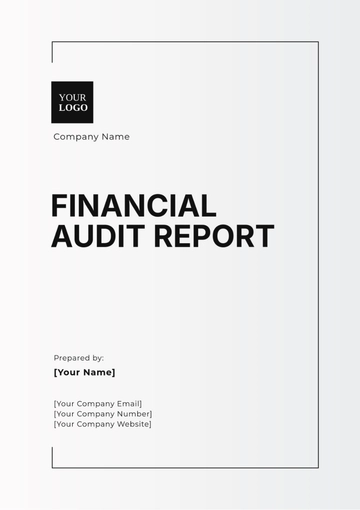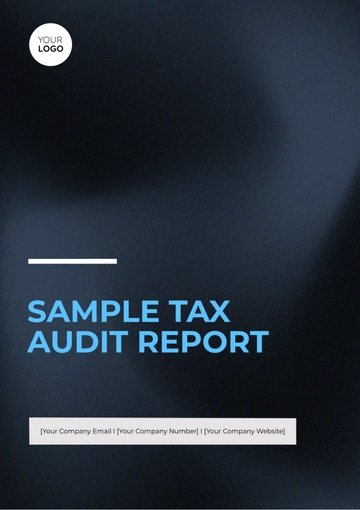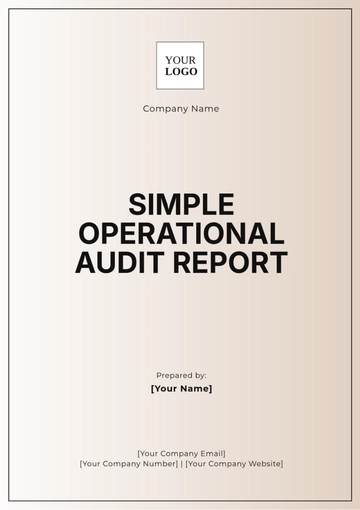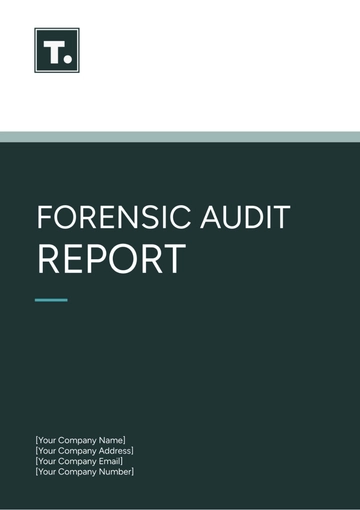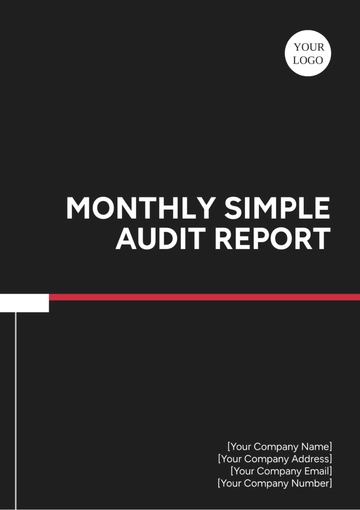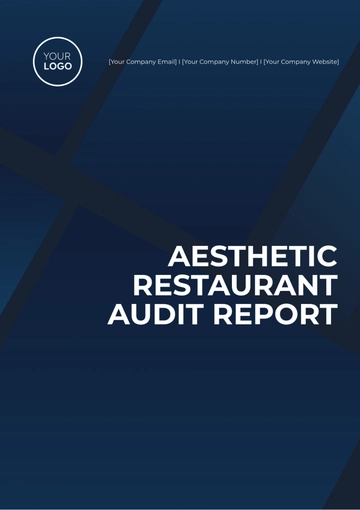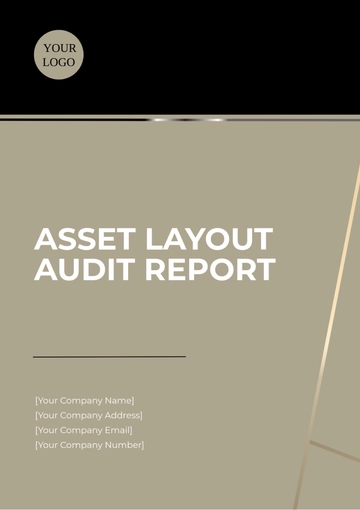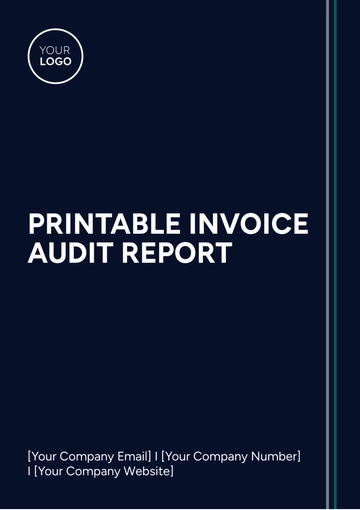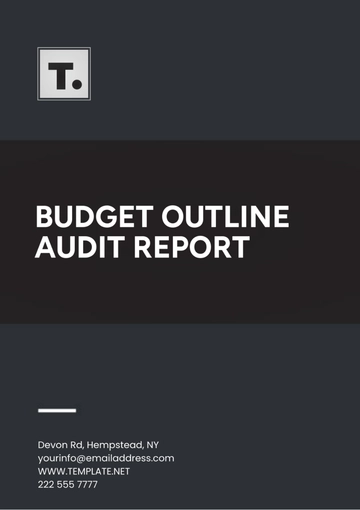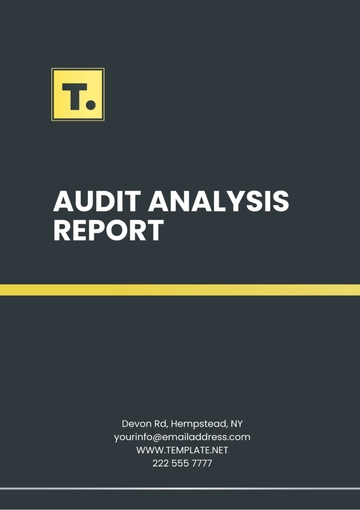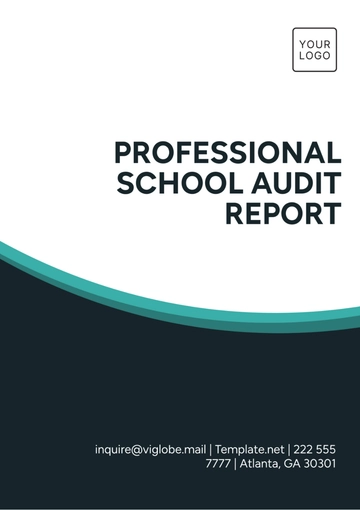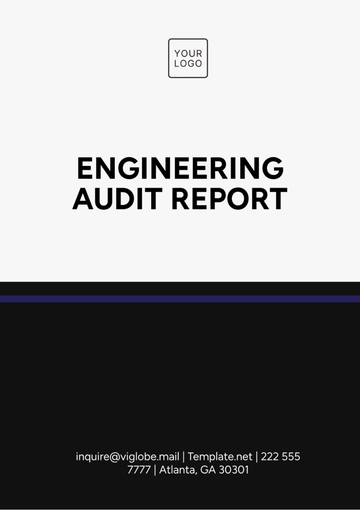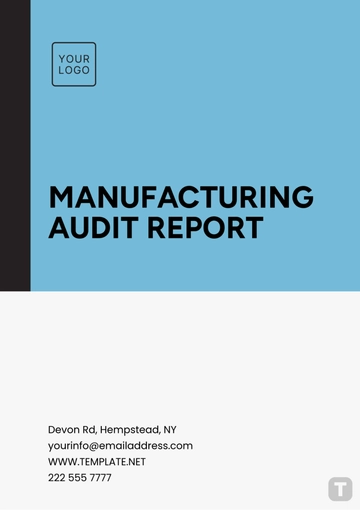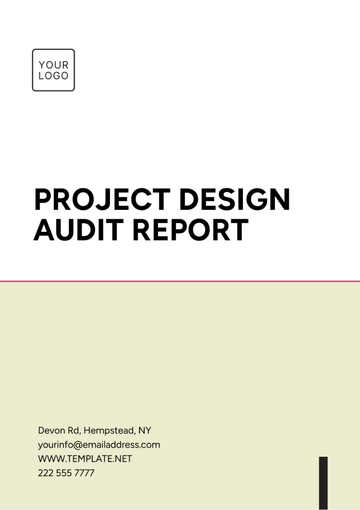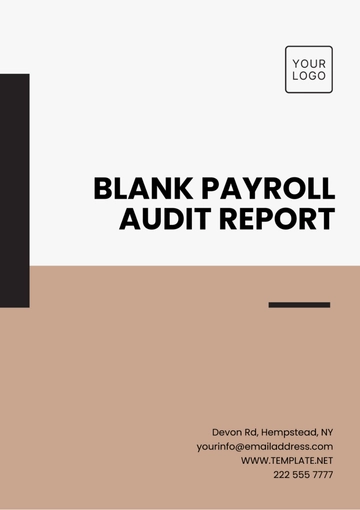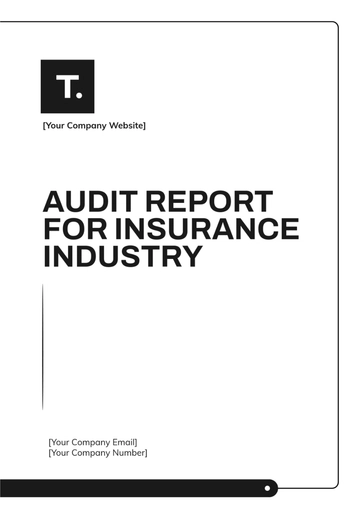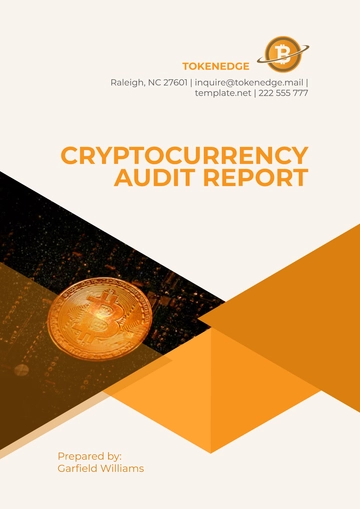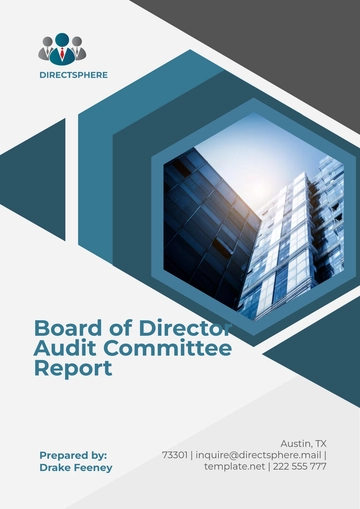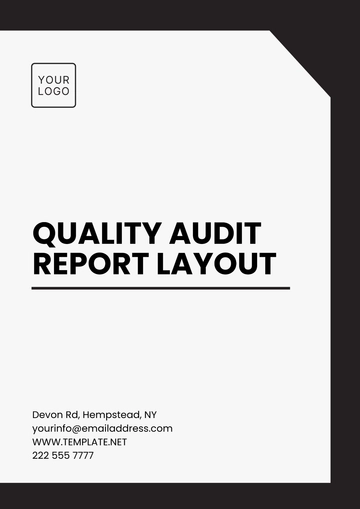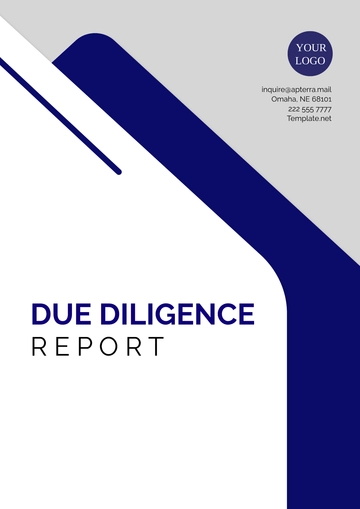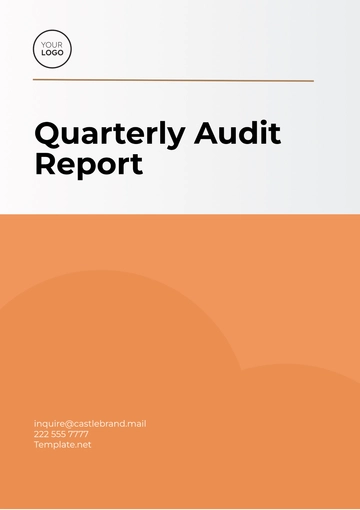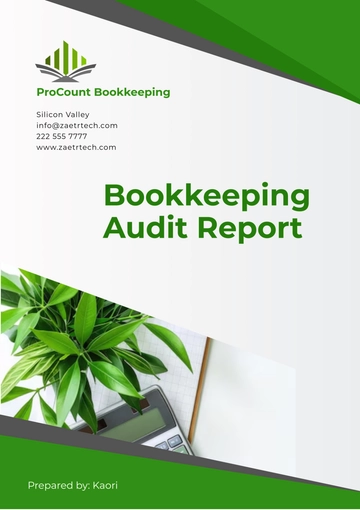Free Legal Corporate Compliance Review Report

I. Executive Summary
A. Overview
This review is a comprehensive examination of [Your Company Name]'s existing compliance frameworks. It scrutinizes their effectiveness in circumventing legal issues and ensuring adherence to all relevant regulations. The review provides a detailed overview of the company’s current compliance status and identifies areas that require improvement.
B. Scope of the Review
The scope of this review extends to all areas of [Your Company Name]'s operations that are subject to legal regulations. This includes, but is not limited to, corporate governance, human resources, financial operations, and environmental compliance. The review aims to provide a holistic understanding of the company’s compliance landscape.
C. Importance of Compliance
Compliance is not just about adhering to laws and regulations. It’s about fostering a culture of integrity and ethical behavior within the organization. A strong compliance framework can help [Your Company Name] avoid legal penalties, protect its reputation, and enhance its relationships with stakeholders.
II. Objective Of The Report
The primary objective of this report is to provide a comprehensive evaluation of [Your Company Name]'s corporate compliance with pertinent legal regulations in its operation sector. The following are the specific objectives:
A. Compliance Evaluation
Evaluate the current state of [Your Company Name]'s compliance with all relevant legal regulations. This includes an examination of the company’s policies, procedures, and practices to identify any areas of non-compliance.
B. Risk Identification
Identify potential legal risks associated with any areas of non-compliance. This involves assessing the potential consequences of non-compliance, including legal penalties, reputational damage, and operational disruptions.
C. Compliance Status Assessment
Assess the overall status of [Your Company Name]'s compliance efforts. This involves evaluating the effectiveness of the company’s existing compliance frameworks and identifying areas where these frameworks are strong and areas where they could be improved.
D. Continuous Improvement Support
Support [Your Company Name]'s commitment to continuous improvement in its compliance efforts. This involves providing a basis for ongoing review and updating of the company’s compliance frameworks to ensure they remain effective and relevant in the face of changing legal regulations and business conditions.
III. Methodology
The methodology employed for this review is comprehensive and rigorous, ensuring a thorough evaluation of the company’s compliance status. It includes the following steps:
A. Review of Company Policies
The first step in our methodology involves a detailed review of the company’s existing policies. This includes all policies related to legal compliance, corporate governance, human resources, financial operations, and environmental compliance. The aim is to understand the company’s current compliance frameworks and identify any gaps or areas of non-compliance.
B. Interviews with Selected Personnel
To gain a deeper understanding of how the company’s policies are implemented in practice, we conduct interviews with selected personnel. These interviews provide valuable insights into the company’s compliance culture and the effectiveness of its compliance training programs.
C. Examination of Legal Documentation
We also examine the company’s legal documentation, including contracts, agreements, and compliance reports. This helps us assess the company’s adherence to legal requirements in its business dealings and reporting practices.
D. Evaluation of Training and Knowledge Programs
An important part of our methodology is the evaluation of the company’s training and knowledge programs. We assess whether these programs are up-to-date, comprehensive, and effective in educating employees about compliance requirements.
E. Assessment of Non-Compliance Reports
Finally, we assess the company’s non-compliance reports. This involves reviewing the company’s process for identifying, reporting, and resolving non-compliance issues. It provides insights into the company’s ability to promptly address non-compliance and mitigate associated risks.
IV. Key Findings
Each area was evaluated based on the company’s policies, procedures, and practices, as well as the results of interviews with selected personnel and examination of legal documentation. The key findings of this review are presented in the following table. This table provides a snapshot of the company’s compliance level in various areas and the associated non-compliance risk.
Area | Compliance Level | Non-Compliance Risk |
|---|---|---|
Regulatory Update | 60% | Medium |
Policy Implementation | ||
Employee Training | ||
Report Fulfillment | ||
Non-compliance Resolution |
The findings highlight both the strengths and weaknesses of the company’s compliance frameworks, providing a clear picture of where the company stands in terms of legal compliance. They represent the company’s commitment to legal compliance and ethical conduct. A high compliance level in an area indicates that the company’s policies, procedures, and practices in that area are effective and align with legal requirements. On the other hand, a low compliance level indicates that there are gaps in the company’s compliance frameworks that need to be addressed.
Moreover, these findings provide a basis for the company’s continuous improvement efforts. By identifying areas of non-compliance and associated risks, the company can prioritize its efforts to improve its compliance frameworks. This not only helps the company avoid legal penalties and reputational damage but also contributes to its operational efficiency and corporate reputation.
V. Observations & Analysis
The review revealed several noteworthy observations about the company’s compliance efforts. These provide valuable insights into the effectiveness of the company’s compliance frameworks and its commitment to legal compliance.
A. Regulatory Updates
There were instances where regulatory updates were not disseminated on time. This has led to gaps in compliance, as employees were not aware of the latest regulations that they needed to comply with.
The delay in disseminating regulatory updates could be due to inefficiencies in the company’s information dissemination process.
The company needs to establish a more efficient system for tracking regulatory updates and disseminating them to relevant personnel in a timely manner.
B. Policy Implementation
While policy implementation is at a satisfactory level overall, there are areas that require attention. These areas represent potential risks and need to be addressed to ensure overall compliance.
The areas requiring attention could be due to lack of awareness among employees or lack of clarity in the policies.
The company needs to conduct regular audits to ensure that all policies are being implemented correctly and to identify areas that require improvement.
C. Employee Training
The company’s employee training programs lack routine updates according to changing regulations. This can lead to gaps in employees’ knowledge and understanding of compliance requirements, potentially resulting in non-compliance.
The lack of routine updates could be due to a lack of resources dedicated to training program development or a lack of awareness about the importance of regular updates.
The company needs to allocate more resources to developing and updating its training programs and ensure that these programs are aligned with the latest regulations.
D. Report Fulfillment
There is a delay in the fulfillment of mandated compliance reports. This delay represents a high risk, as late or incomplete reports can lead to penalties and damage to the company’s reputation.
The delay could be due to inefficiencies in the company’s report preparation and submission process.
The company needs to streamline its report preparation and submission process to ensure that all reports are prepared and submitted on time.
E. Non-Compliance Resolution
The company has a robust system in place for identifying and rectifying non-compliance issues. This is a strength of the company’s compliance efforts, as it shows a commitment to addressing non-compliance promptly and effectively.
The company’s ability to promptly identify and rectify non-compliance issues could be due to its strong compliance culture and effective training programs.
The company needs to continue its efforts in this area and ensure that all non-compliance issues are promptly identified and rectified.
VI. Recommendations
The following recommendations are based on the findings of the review and are intended to guide the company in enhancing its compliance efforts. Each recommendation is designed to address specific areas of concern identified in the review and to help the company improve its overall compliance status.
A. Regulatory Updates
Establish a Regulatory Update System: Develop a system for tracking regulatory updates in real-time. This could involve using software tools or subscribing to regulatory update services.
Improve Information Dissemination: Implement a reliable process for disseminating regulatory updates to all relevant personnel promptly. This could involve using an internal communication platform or regular update meetings.
Provide Training on Regulatory Updates: Conduct regular training sessions to keep employees updated on the latest regulations and how they impact their roles and responsibilities.
B. Policy Implementation
Strengthen Policy Implementation: Enhance the implementation of policies through routine checks and audits. This will ensure that all policies are being adhered to consistently across the company.
Improve Policy Awareness: Conduct regular training sessions to ensure that all employees are aware of the company’s policies and understand their importance in ensuring legal compliance.
Establish a Policy Feedback Mechanism: Set up a mechanism for employees to provide feedback on the company’s policies. This will help the company identify any issues with the policies and make necessary improvements.
C. Employee Training
Update Training Programs: Regularly update the company’s training programs to reflect changes in regulations. This will ensure that employees have the most current knowledge and understanding of compliance requirements.
Conduct Regular Refresher Training: Provide regular refresher training to employees to reinforce their knowledge and understanding of compliance requirements.
Evaluate Training Effectiveness: Regularly evaluate the effectiveness of the company’s training programs and make necessary improvements based on the evaluation results.
D. Report Fulfillment
Optimize Report Preparation Process: Streamline the process of preparing and submitting compliance reports. This could involve using software tools to automate parts of the process or providing training to employees on report preparation.
Establish a Reporting Schedule: Set up a schedule for preparing and submitting compliance reports and ensure that all relevant personnel are aware of this schedule.
Monitor Report Fulfillment: Closely monitor the report fulfillment process to identify and address any delays or issues promptly.
E. Non-Compliance Resolution
Maintain Prompt Resolution of Non-Compliance Issues: Continue to promptly identify and rectify non-compliance issues. This shows a strong commitment to legal compliance and should be maintained.
Provide Training on Non-Compliance Resolution: Conduct training sessions to educate employees on how to identify and report non-compliance issues.
Review Non-Compliance Resolution Process: Regularly review and update the company’s non-compliance resolution process to ensure its effectiveness.
These recommendations provide a roadmap for the company to improve its compliance status and mitigate legal risks. They are designed to be actionable and practical, providing clear guidance on the steps the company can take to enhance its compliance efforts.
VII. Conclusion
The review has provided a comprehensive evaluation of the [Your Company Name]'s current compliance status, identifying both strengths and areas of improvement in the company’s compliance frameworks. The company has shown a solid commitment to legal compliance, as evidenced by its robust system for identifying and rectifying non-compliance issues.
However, there are areas that require attention, including the timely dissemination of regulatory updates, the implementation of policies, the updating of employee training programs, and the fulfillment of compliance reports. Addressing these areas will not only improve the company’s compliance status but also mitigate potential legal risks.
Compliance is not just about adhering to laws and regulations. It’s about fostering a culture of integrity and ethical behavior within the company. A strong compliance framework can help the company avoid legal penalties, protect its reputation, and enhance its relationships with stakeholders. With the suggested strategies, it is anticipated that the company will be able to address the identified areas of non-compliance and enhance its overall compliance efforts. This will not only mitigate legal risks but also contribute to the company’s operational efficiency and corporate reputation.
In summary, while the company has made commendable efforts in ensuring legal compliance, continuous improvement should be the goal. The recommendations provided in this report offer a roadmap towards achieving an optimized compliance level. By implementing these recommendations, the company can strengthen its commitment to legal compliance, mitigate potential risks, and uphold its reputation for integrity and ethical conduct.
- 100% Customizable, free editor
- Access 1 Million+ Templates, photo’s & graphics
- Download or share as a template
- Click and replace photos, graphics, text, backgrounds
- Resize, crop, AI write & more
- Access advanced editor
Conduct thorough reviews with confidence using the customizable Legal Corporate Compliance Review Report Template! This adaptable report is completely editable, ensuring seamless customization through the advanced and intuitive AI Editor Tool! Make Template.net your ally to level up your compliance reporting, offering a comprehensive and professional assessment of organizational practices!
You may also like
- Sales Report
- Daily Report
- Project Report
- Business Report
- Weekly Report
- Incident Report
- Annual Report
- Report Layout
- Report Design
- Progress Report
- Marketing Report
- Company Report
- Monthly Report
- Audit Report
- Status Report
- School Report
- Reports Hr
- Management Report
- Project Status Report
- Handover Report
- Health And Safety Report
- Restaurant Report
- Construction Report
- Research Report
- Evaluation Report
- Investigation Report
- Employee Report
- Advertising Report
- Weekly Status Report
- Project Management Report
- Finance Report
- Service Report
- Technical Report
- Meeting Report
- Quarterly Report
- Inspection Report
- Medical Report
- Test Report
- Summary Report
- Inventory Report
- Valuation Report
- Operations Report
- Payroll Report
- Training Report
- Job Report
- Case Report
- Performance Report
- Board Report
- Internal Audit Report
- Student Report
- Monthly Management Report
- Small Business Report
- Accident Report
- Call Center Report
- Activity Report
- IT and Software Report
- Internship Report
- Visit Report
- Product Report
- Book Report
- Property Report
- Recruitment Report
- University Report
- Event Report
- SEO Report
- Conference Report
- Narrative Report
- Nursing Home Report
- Preschool Report
- Call Report
- Customer Report
- Employee Incident Report
- Accomplishment Report
- Social Media Report
- Work From Home Report
- Security Report
- Damage Report
- Quality Report
- Internal Report
- Nurse Report
- Real Estate Report
- Hotel Report
- Equipment Report
- Credit Report
- Field Report
- Non Profit Report
- Maintenance Report
- News Report
- Survey Report
- Executive Report
- Law Firm Report
- Advertising Agency Report
- Interior Design Report
- Travel Agency Report
- Stock Report
- Salon Report
- Bug Report
- Workplace Report
- Action Report
- Investor Report
- Cleaning Services Report
- Consulting Report
- Freelancer Report
- Site Visit Report
- Trip Report
- Classroom Observation Report
- Vehicle Report
- Final Report
- Software Report

